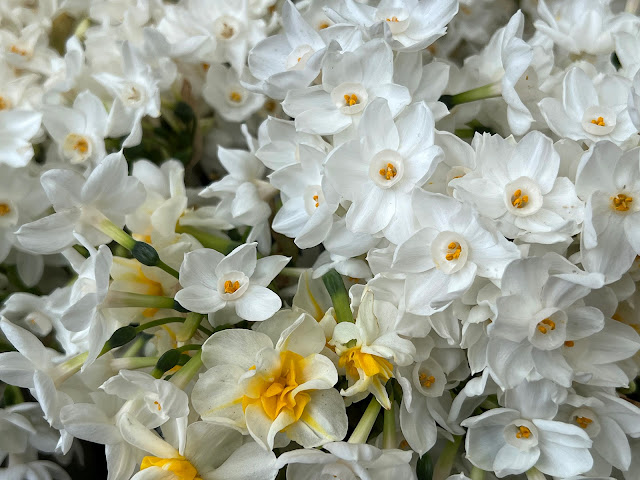This is a blog where I post my favourite photographs from around the places I've visited. I am an amateur photographer and I am ever learning as I go along!
Thursday 30 November 2023
HEUCHERA
Thursday 16 November 2023
Thursday 19 October 2023
Monday 9 October 2023
YOU HAVE MAIL
and also part of the Blue Monday meme,
and also part of the Seasons meme.
Thursday 21 September 2023
WISTERIA
Thursday 10 August 2023
Thursday 3 August 2023
GERALDTON WAX FLOWER
Thursday 27 July 2023
Thursday 20 July 2023
ALOE
Thursday 13 July 2023
Thursday 6 July 2023
Thursday 29 June 2023
Thursday 22 June 2023
CINERARIA
Cineraria is now generally treated as a genus of about 50 species of flowering plants in the family Asteraceae, native to southern Africa. The genus includes herbaceous plants and small sub-shrubs. In the past, the genus was commonly viewed in a broader sense including a number of species from the Canary Islands and Madeira which are now transferred to the genus Pericallis, including the Florist's Cineraria (Pericallis x hybrida). The uses for Cineraria include topical application for the treatment of cataracts.
This post is part of the Floral Friday Fotos meme.
Thursday 15 June 2023
CYMBIDIUM
Thursday 8 June 2023
XERANTHEMUM
Thursday 1 June 2023
BACOPA
Sutera cordata 'Scopia Gulliver Blue' (sometimes known as Bacopa, or Chaenostoma cordatum), is a herbaceous annual with a trailing habit of growth, eventually spilling over the edges of hanging baskets and containers. Its relatively fine texture sets it apart from other garden plants with less refined foliage. This plant will require occasional maintenance and upkeep, and should not require much pruning, except when necessary, such as to remove dieback. It has no significant negative characteristics.
The plant grows to about 15 cm height and spreads over an area 50-60 cm in diameter. It is covered in stunning purple flowers with sky blue overtones and yellow eyes, along the stems from mid-spring to early winter. Its small serrated round leaves remain green in colour throughout the year. The fruit is not ornamentally significant.
This post is part of the Floral Friday Fotos meme
Thursday 25 May 2023
KANGAROO PAW
Kangaroo paw is a common name for a number of species, in two genera of the family Haemodoraceae, that are endemic to the south-west of Western Australia. These perennial plants are noted for their unique bird attracting flowers. The tubular flowers are coated with dense hairs and open at the apex with six claw-like structures: from this paw formation the common name "Kangaroo Paw" is derived. The two genera are Anigozanthos (shown here) and Macropidia.
This post is part of the Floral Friday Fotos meme.
Thursday 18 May 2023
Thursday 11 May 2023
PREMATURE SPRING!
Thursday 4 May 2023
Thursday 27 April 2023
AUTUMN ROSE
Thursday 20 April 2023
CHRYSANTHEMUM
Thursday 13 April 2023
WARATAH
Wednesday 5 April 2023
ZINNIA AND BEE
Saturday 1 April 2023
AVRIL FISH
A new species of fish was discovered in the tropical waters of Pantespania and the discovery reported today in the scientific journal "Acta Fishiologica". The fish has been provisionally named "Poissonis avrilis" and is a bright yellow colour which phosphoresces in the dark depths of the sea, or in the dead of night. The first photos are quite astonishing!
This post is part of the Saturday Critters meme.
🐠
🐠 🐠
🐠 🐠
🐠
🐠
🐠
🐠 🐠
🐠 🐠
🐠
🐠 🐠
🐠 🐠
🐠
🐠
🐠
🐠 🐠
HAPPY APRIL FOOL'S DAY!
An April Fool in France is known as "Poisson d' Avril", which literally means an April Fish!
Thursday 30 March 2023
CHAMOMILE
Chamomile (or camomile) is the common name for several daisy-like plants of the family Asteraceae that are often used to make herbal infusions to serve various medicinal purposes. Popular uses of chamomile preparations include treating hay fever, inflammation, muscle spasms, menstrual disorders, insomnia, ulcers, gastrointestinal disorders, and haemorrhoids. Chamomile tea is also used to treat skin conditions such as eczema, chickenpox and psoriasis.
The word ‘chamomile’ derives, via French and Latin, from Greek χαμαίμηλον (khamaimēlon), i.e. ‘earth apple’, from χαμαί (khamai) ‘on the ground’ and μῆλον (mēlon) ‘apple’. The more common British spelling ‘camomile’, is the older one in English, while the spelling ‘chamomile’ corresponds to the Latin and Greek source.
This post is part of the Floral Friday Fotos meme.
Thursday 23 March 2023
ASTILBE
Thursday 16 March 2023
ROSA 'PINK INTUITION'
Thursday 9 March 2023
KOTOBUKI BEGONIA
Thursday 2 March 2023
SUNFLOWER
Helianthus x multiflorus 'Flore Pleno' is a robust, perennial plant that produces double yellow flowers throughout the summer. Its deep green foliage is an excellent screen or foil to showcase small plants. Flowers of Helianthus x mult. 'Flore Pleno' are scattered all throughout this "green wall" which makes it an excellent choice for the back of your border.
This is a good plant for cut flowers and blooms for 4 weeks or more. It can be planted in containers and attracts butterflies. Prefers average, neutral to slightly alkaline soil. Well drained soil is good for overwintering, but give Helianthus a good soaking if August begins to overpower. Can be divided in spring every 3-4 years. Cut back by one-half in early to midsummer to prevent staking.
This post is part of the Floral Friday Fotos meme.





































